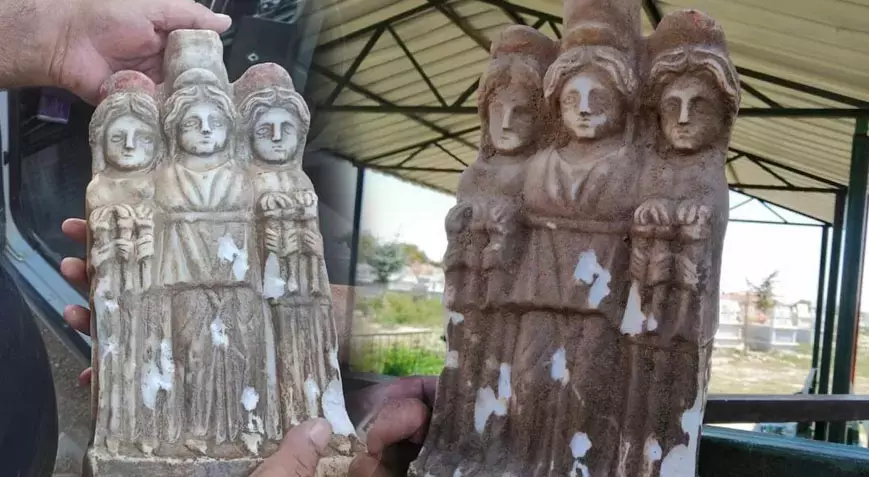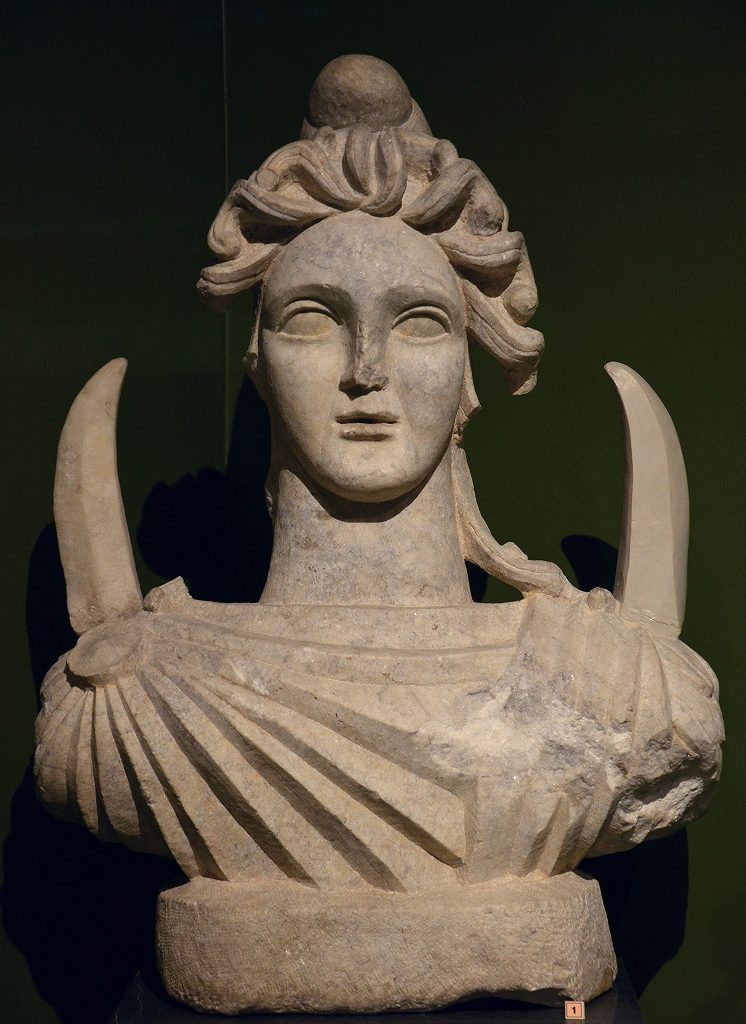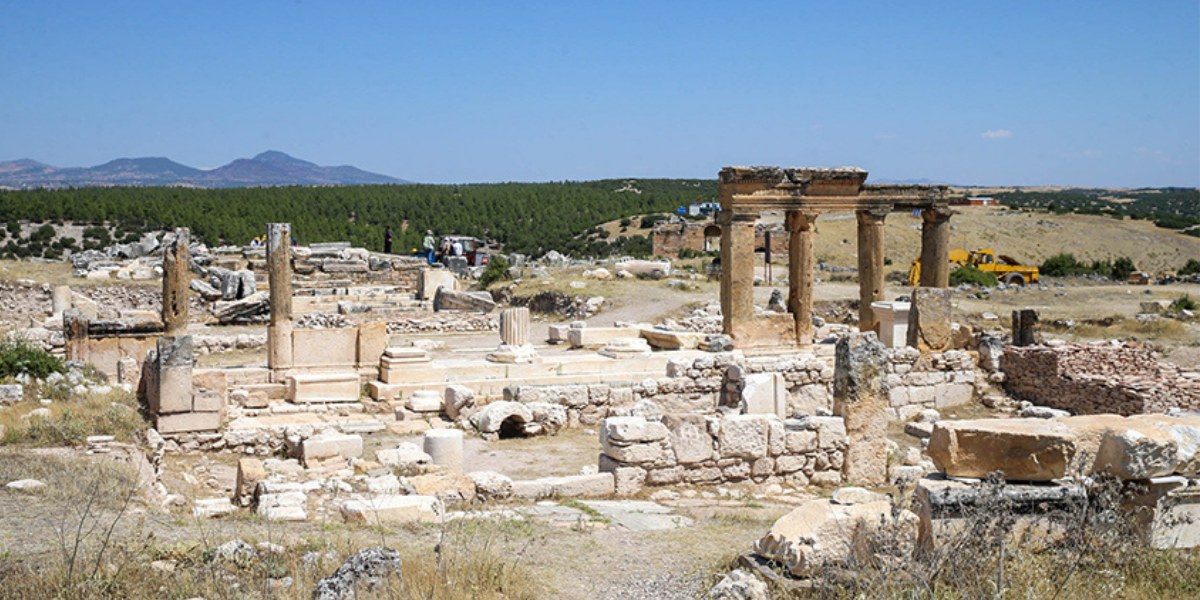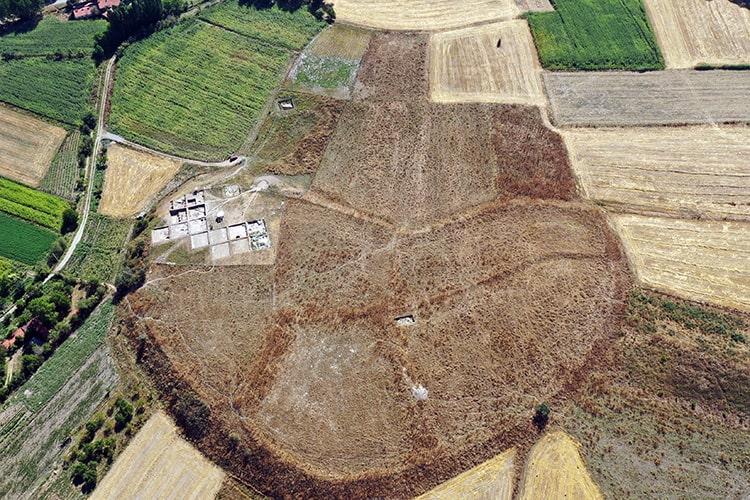In a cemetery in the Emirdağ district of Afyonkarahisar, workers found a broken figure of the Roman-era “Three Graces” along with a bird figure and the Moon God Men while digging graves.
The village headman, B.B, reported the situation to the gendarmerie.
Officials from the Afyonkarahisar Museum Directorate, during their examination, determined that the artifacts were a Roman-era “Tree Graces” and a bird figurine along with the Moon God Men statue.
The discovered artifacts were handed over to the Afyonkarahisar Museum Directorate.
Three Graces
Three Graces, a concept in Greek and Roman mythology, represents a group of three goddesses who play an important role. Their names are Euphrosyne (Joy), Aglaea (Beauty), and Thalia (Grace). These three goddesses symbolize beauty, grace, joy, entertainment, and harmony among people.
The Three Graces are often depicted together, holding hands or dancing. Artists who portray them aim to depict these goddesses as graceful and harmonious, and these depictions are often used as part of various artworks. In art and culture, the values represented by the Three Graces are often interpreted as beauty, grace, and joy.

These three goddesses are also considered companions of Aphrodite (Venus) or other goddesses associated with love and beauty. In Greek mythology, they are named Euphrosyne, Aglaea, and Thalia, while in Roman mythology, they are more commonly referred to as the Gratiæ or Charites.
The Three Graces appear in many works of art, literature, and culture. Renaissance artists, in particular, had many opportunities to portray these three goddesses, and these depictions became an important part of Renaissance art. Therefore, the Three Graces have become a significant symbol in art history and mythology.
Moon God Mēn
Mēn, derived from the Greek word meaning “moon,” was a lunar deity worshipped in ancient Anatolia. This god was revered in the western interior regions of Anatolia, particularly in Pisidia, and was recognized in various localized variants. It is thought to have been influenced by the Avestan word “måŋha.”
Mēn is generally associated with Persian elements, especially in connection with the goddess Anahita. Lunar symbolism played a significant role in its iconography. It is often depicted with crescent moon horns extending from its shoulders and is regarded as a deity presiding over the months.
According to Strabo, Mēn was also described as a local god of the Phrygians, indicating the existence of regional variations.
Furthermore, it is suggested that Mēn may have been influenced by the Zoroastrian lunar deity Mah. Interactions and similarities between such deities were common phenomena in ancient religious beliefs.

Mēn and its various variants have contributed to the diverse pantheon of gods and goddesses in ancient Anatolia, often associated with the cycles of nature and various aspects of daily life.
The indigenous Mēn, as worshipped in Anatolia, should be distinguished from the Mēn who was recognized as the “Phrygian god” during the imperial period in Rome. In this context, Mēn is depicted wearing a Phrygian cap and a draped tunic. In religious art, bulls and lions may accompany him. The Roman iconography of Mēn partly resembles that of Mithras, who is depicted wearing a Phrygian cap and is often associated with a bull, as well as Sun and Moon symbols.
According to the Augustan History, the Roman Emperor Caracalla (reigned 198-217) showed respect to Lunus in Carrhae. Lunus, a Latinized name for Mēn, is derived from the feminine Latin word “luna,” meaning “Moon,” with a masculine variation. The same source mentions a local belief that those who considered the Moon god to be feminine would always be subordinate to women, while those who believed the god to be masculine would rule over their wives.
David Magie suggests that Caracalla may have actually visited the Temple of the Mesopotamian Moon god Sin during his time in Carrhae.
Source about Moon God Men: Wikipedia




